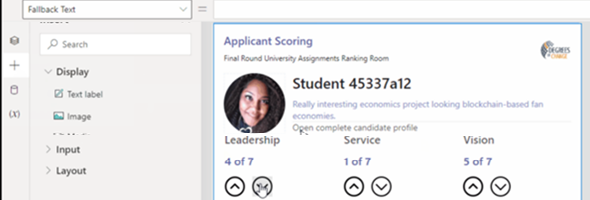Cards for Power Apps are a new way to design and deliver mini-apps to Microsoft Outlook and Microsoft Teams using Power FX/low-code.
Cards for Power Apps are the new addition to the Microsoft lo-code lineup, which allows citizen developers to build interactive, visual data-driven actionable cards. These can be shared with other people in Microsoft Teams and Microsoft Outlook, with a customizable visual interface. This new functionality is based on the Adaptive Card Framework (https://adaptivecards.io). While previously we could design cards using the Designer on the Adaptive Cards site, we will not be able to do the same with the same look and feel as we have for developing Canvas Apps and Custom Pages.
The drag-and-drop Card designer that is part of Cards for Power Apps has the same familiar functionality that the other Power Apps applications have. Power Apps developers can easily create Cards that consist of buttons, tables, text, images, and other components without writing code.

In addition, you can incorporate a large variety of Power Platform Connectors in the card designer, which will allow users to connect to data and back-end services, filling the cards with relevant data when the users see them in Microsoft Teams or Microsoft Outlook. In addition, Microsoft Dataverse is built in, which allows to build card using this data platform. Cards for Power Apps support Power FX for business logic, which in addition allows easy calculations and actions, and the creation of custom logic, data operations and the user of the Power Platform Connectors connected to the User Interface elements of the card.
Cards for Power Apps will be available in Public Preview and available across the different regions soon. The first wave will build on Dataverse as the backend and Microsoft Teams as the target for sharing. New features and functionality will appear in the months to come.
To read the original announcement, follow the link below.

